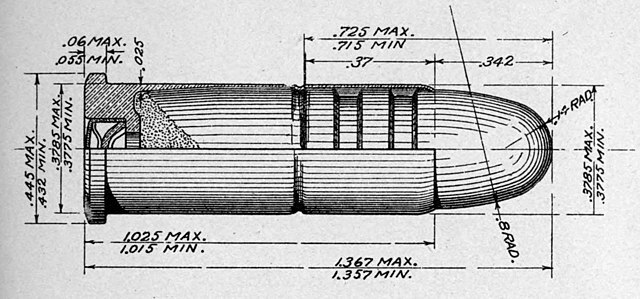
The .38 Long Colt, sometimes referred to as .38 LC, is a black powder cartridge introduced to the world in 1875. Developed and manufactured by the Colt's Patent Fire Arms Manufacturing Company, this cartridge has had an important impact on the history of small arms ammunition. Despite its somewhat ambiguous title suggesting a .38 caliber, the actual bullet diameter of the .38 Long Colt is .357–.358 inches (9.07 mm).
Invention and Initial Use of the .38 Long Colt Cartridge
The .38 Long Colt was designed by one of the most well-known names in firearms history, Colt's Patent Fire Arms Manufacturing Company. The purpose of the cartridge was to create an effective, reliable round for the Colt's new double-action revolver. Colt's focus on cartridge design was not just an attempt to push the boundaries of technology but was aimed at satisfying military requirements of that era.
In 1892, the cartridge was adopted as the standard military service revolver cartridge by the United States Army, which sought a replacement for their .45 caliber revolvers. The .38 Long Colt was used in several firearms, notably the Colt Model 1892, a double-action revolver that served the US military until the adoption of the .45 ACP M1911 pistol.
Predecessors and Successors
The .38 Long Colt evolved from its shorter cousin, the .38 Short Colt. The shorter round was lengthened to give it greater power and accuracy, which culminated in the .38 Long Colt. The principal difference between the two was the length of the case and, consequently, the amount of powder it could contain.
However, the performance of the .38 Long Colt in combat situations was criticized, notably during the Philippine-American War at the turn of the 20th century. Its lackluster stopping power led to the development of a more effective cartridge. This eventually resulted in the .38 Special, introduced by Smith & Wesson in 1898, which offered more power and accuracy.
Performance and Characteristics
The .38 Long Colt originally fired a .357-inch (9.1 mm) diameter heeled bullet, which means the bullet was the same diameter as the case, and the "heel" of the bullet is reduced in diameter to fit in the case. It weighed 150 grains (9.7 g), propelled by 18 grains (1.17 g) of black powder. This combination yielded a muzzle velocity of approximately 770 feet per second (230 m/s) and 185 ft-lbf (250 J) of energy.
In the 1892 revolvers, the .38 Long Colt was loaded with a 150-grain (9.7 g) flat-nosed lead bullet propelled by 21 grains (1.4 g) of black powder, later changed to smokeless powder, to a muzzle velocity of 777 ft/s (237 m/s). However, the round's stopping power was deemed unsatisfactory in combat situations.
Legacy
The .38 Long Colt served as an intermediary step in handgun cartridge development. It was seen as an improvement over the .38 Short Colt but was eventually replaced by the superior .38 Special. While the .38 Long Colt is no longer as popular as it once was, and has largely been replaced by more modern cartridges, it remains a part of firearms history.
Today, the .38 Long Colt holds a certain nostalgia for firearms enthusiasts and collectors. Although less common, some manufacturers continue to produce .38 Long Colt ammunition, providing an opportunity for owners of vintage firearms chambered for this round to experience a piece of history.
Join the conversations on this and other history Colt cartridges and firearms at The Colt Forum
If you know of any forums or sites that should be referenced on this listing, please let us know here.




